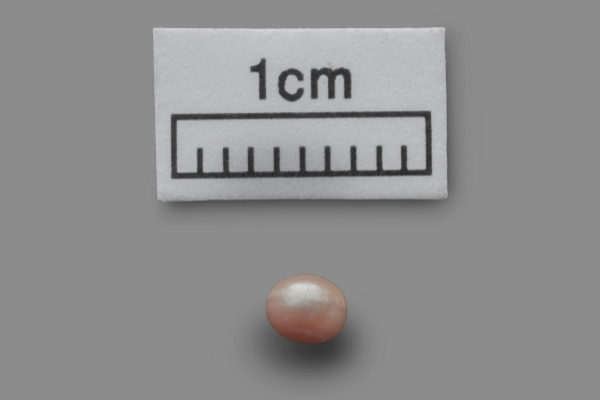FRANCISCO CARRIÓN
@fcarrionmolina
Cairo
Sunday, November 3, 2019 - 02:12
- Share on Facebook
- Share on Twitter
- Send by email
8,000 years ago a pearl was accidentally lost on the floor of a Neolithic dwelling on the island of Marawah, off the coast of the current Abu Dhabi. His finding, announced this week, has made headlines and conversations. But few details have transcended the extraordinary discovery of the oldest natural pearl on the planet. Until now.
"We have been very lucky because it is an exceptional discovery," says Chronicle Mark Beech, who has been treading the arid island since 1994. "It is the most complete Neolithic settlement in the region, with the first test of stone architecture and urban planning ».
The surprise appeared precisely in one of the stone homes that extend a few meters from the sea. “We found the pearl in room 5, an oval shaped room made on a rocky bed. We were cleaning the remains of the occupation, removing layers of deposit very carefully because we were aware that there could be very small pieces, ”recalls the archaeologist.
It was then that the pearl broke into the scene, like a tiny point surrounded by charred remains. Its size ranges between 2.5 and 3 millimeters. «The appearance on a level that contained burned material allowed us to date it by radiocarbon with precision. It was used between 5,800 and 5,600 BC, ”admits Beech.
The specimen - whose value, with "all precautions", could range between 35,000 and 38,000 euros, according to Spanish jewelry appraiser and gemologist Manuel León - comes from a radiated oyster, popularly known as the "pearl oyster of the Atlantic »Or the Gulf and still present from the Indian to the Mediterranean.
The most archaic pearl was found in October 2017, months before another appeared in an adjoining room. «The first is the one that is best preserved. Of the other we have only found one half », details the expert. «It is a miracle that he could survive 8,000 years. The pearl is very fragile and it was the external conditions that managed to keep it ».
A cluster of circumstances worked the prodigy, which will be the jewel of a temporary exhibition that opens its doors later this month at the Louvre in Abu Dhabi. «The pearl was buried on organic material and the limestone walls of the room. Together with the surrounding climatic conditions, everything ended up creating a preservation microcosm, ”reveals the Briton.
At the time of the pearl, the inhabitants of Marawah already had some domesticated animals such as sheep and goats and interacted through long trade routes with Mesopotamia, from which they brought pottery in exchange for fish and pearls. The nickname "Pearl of Abu Dhabi" survived because of a slip.
«It is a fascinating story. You have to imagine that 8,000 years ago someone was creating a necklace in that room that was a kind of workshop. The little pearl fell and got lost. It was an accidental loss, ”he concludes. The value of "cluelessness" is incalculable today.
According to the criteria of The Trust Project
Know more
